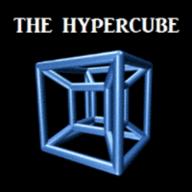In a regular hexagon ABCDEF, M and N are points on AC and CE such that B, M, N are collinear and AM/MC=CN/CE=r. Evaluate r.
* I solved this Q with 1 classmate and 1 maths teacher within about 40 mins.
VERY DIFFICULT GEOMETRY Q1
2012-04-21 5:14 am
回答 (3)
2012-04-21 10:18 pm
✔ 最佳答案
Sorry, the question is AM/MC = CN/CE = rOR AM/MC = CN/NE = r ?
2012-04-21 14:18:47 補充:
As AC = CE, AM:MC = CN:NE, so AM = CN and MC = NE, ㄥBCM = 30, ㄥMCN = 60
For easy to do calculation, let BC = √3, MC = a,
Therefore, CE = 3 and CN = 3 - a
Using Cosine Formula,
BM^2 = BC^2 + MC^2 - 2(BC)(MC) cos 30
==> BM^2 = 3 + a^2 - 2(√3)a (√3/2)
==> BM^2 = a^2 - 3a + 3 . . . . . . .. (i)
MN^2 = MC^2 + CN^2 - 2(MC)(CN) cos 60
==> MN^2 = a^2 + (3 - a)^2 - 2a(3 - a) cos 60
==> MN^2 = a^2 + a^2 - 6a + 9 - 3a + a^2
==> MN^2 = 3(a^2 - 3a + 3) . . . . . . (ii)
Using Pythagoras Theorem,
BN^2 = BC^2 + CN^2
==> (BM + MN)^2 = 3 + (3 - a)^2
==> (a^2 - 3a + 3)(√3 + 1)^2 = 3 + a^2 - 6a + 9 . . . . (from i, ii)
==> (2√3 + 3)a^2 - 6(√3 + 1)a + 6√3 = 0
==> (2 + √3)a^2 - 2(3 + √3)a + 6 = 0 . . . . . . . . (divided by √3)
==> a^2 - 2(3 - √3)a + (12 - 6√3) = 0 . . . . .(multiply by (2 - √3)
==> a^2 - 2(3 - √3)a + (3 - √3)^2 = 0
==> [a - (3 - √3)]^2 = 0
==> a = 3 - √3
Therefore MC = a = 3 - √3, so CN = 3 - a = √3
r = CN/NE = √3/(3 - √3) = (√3 + 1)/2Ans : r = (√3 + 1)/2
2012-04-22 07:23:15 補充:
Method 2 : Using Rectangular Coordinate System
Let the length of the regular hexagon be 2, F be the origin, So
A(-1, √3), B(0, 2√3), C(2, 2√3), D(3, √3), E(2, 0), F(0,0).
As AM:MC = CN:NE = r:1, so the coordinates of M, N are
((2r - 1)/(r + 1), (2√3r + √3)/(r+1)), (2, 2√3/(r + 1)) respectively.
2012-04-22 07:23:26 補充:
As BMN are collinear, therefore,
slope of BM = slope of BN
==> [(2√3r + √3)/(r + 1) - 2√3]/[(2r -1) /(r + 1)] = [2√3/(r + 1) - 2√3]/2
==> -√3/(2r - 1) = -√3r/(r + 1)
==> r + 1 = 2r^2 - r
==> 2r^2 - 2r - 1 = 0
==> r = (1 + √3)/2 or (1 - √3)/2 (rej, as r is not -ve)
Ans : r = (1 + √3)/2
2012-04-22 07:34:05 補充:
比較之下, 我個人喜歡 Method 2. 此方法乃因為發現ㄥCBM = 45,
Slope of BM = -√3/(2r - 1) = -1.
第一個方法諗咗 40 分鐘, 第二個方法諗咗 4 分鐘, 好諷刺. 數學就是那麼有趣.
希望有人找到更有趣的方法.
2012-04-23 20:49:26 補充:
Thanks, I know, I always hope so.
2012-04-21 9:55 pm
Thx for reminding me!
2012-04-21 5:47 am
r=1 , I'm your classmate , Hi~~
收錄日期: 2021-04-13 18:38:15
原文連結 [永久失效]:
https://hk.answers.yahoo.com/question/index?qid=20120420000051KK00751


